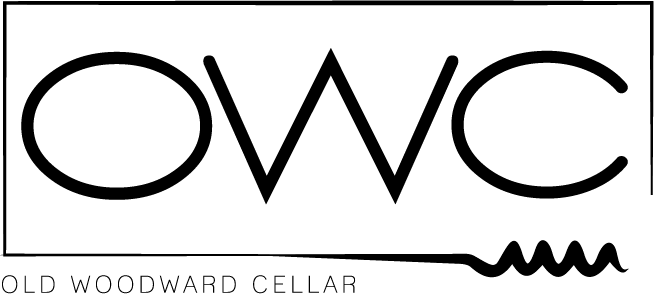Natural Wines….
“Natural wine” is one of the hippest terms in the wine world, but it’s also one of the most misunderstood. The biggest questions are “Isn’t all wine natural?” followed by the counterpoint “Is any wine really natural?” but neither are that useful in the genuine pursuit of knowledge. Knowing how wine is made isn’t essential to enjoying wine, but understanding the process of making wine helps one appreciate the work of winemaking and the wonder of terroir. Natural wines promote responsible and sustainable vineyard practices with as little synthetic treatment as possible (i.e. the use of pesticides, herbicides, fungicides, Mega Purple, Ovo-Pure, Isinglass, liquid oak, oak chips, & sulfur.) All winemaking begins with grape growing, and most every winemaker or serious brand marketing sheet will profess that “Great wine is made in the vineyard!”, but the truth is much more elaborate than that.
There is a far edge of natural wines, but also another side: traditional wines that use old-school techniques, or very careful and deliberate modern techniques to most clearly express terroir.
vin de terroir / vin d'excellence / vin de soif
new school natural vs old school natural
Winemaking is an ancient practice, with a history of going back more than 8,000 years. Advancements in grape growing and winemaking occurred throughout the millennia, but the most impactful have been made in the last century. Synthetic nitrogen fertilizer, developed to make bombs and abundantly available after the First World War, allowed much larger harvests than ever before, but created new problems, like an excess of weeds. The mechanical and herbicidal solutions to weed control created issues of their own and the solutions to those problems yet more to deal with.
Organic farming attempts to prevent this cycle by approaching farming from a holistic perspective, using the processes of nature to grow crops that are healthier and need less intervention. Clean, healthy grapes have everything they need to turn into wine and should not need any additives. Growing grapes organically is the first essential element of natural winemaking, though the grapes may not be certified. In addition to growing grapes without the use of synthetic chemicals, practices like cover cropping, horse plowing, composting, and dry farming can contribute to healthy living soils and, in turn, robust vines that bear compelling fruit. These practices don’t make any location produce great wine, but allow a good site planted with right variety to fully express itself. Grape vines will naturally produce a large crop load and quality can suffer, so working a vineyard by hand to reduce yields can improve ripeness, and harvesting by hand will ensure that only the best fruit in made into wine. These techniques are not unique to “natural wine” and are standard for most high quality wines, but cannot be achieved with the industrial-scale production of big-brand wines.
At this point the subjective decisions of the winemaker become important. Though not a requirement, many natural winemakers pick their fruit earlier, seeking a wine of moderate alcohol with a balanced acidity that does not need to be edited in the winery. Grapes that are grown cleanly will have a natural yeast culture on the skins, and the use of added yeast, especially laboratory-made yeast, is disallowed by all definitions of natural winemaking. Most conventional wines have sulfur dioxide added before fermentation to control the process and prevent oxidation, but the tendency within natural winemaking is to use none before fermentation and as little as possible after. There are a wide range of opinions regarding other techniques, including temperature control, mechanical aeration, oak aging, and filtering, but heavy fining and filtration is frowned upon, and the highly manipulative processes like reverse osmosis and chaptalization are always disallowed.
When the base knowledge about what goes into winemaking is applied, one can fully understand the point: crafting and appreciating wines that have a connection to nature, and even better, to a place, encompasses the core makeup of the natural wine movement. Some natural wines at the far end of the spectrum are downright funky and have no terroir, and even a rather feral character that can be raw & unpolished to the uninitiated, but loved by some natural wine enthusiasts. Most wines that follow a natural philosophy and meet all of the technical points are clean, well-made, and reflect their origin. Some of them are even historical estates that have always made wine the old way, or adopted more modern practices of the decades but decided to get back to the essentials.
Wines that have a pure disposition and reflect their place of origin are the types of wines we at O.W.C. seek to have on our shelves. This is why you will not see many of the same name brands typically found at local “Gourmet Markets” or Grocery stores here. We don’t believe in promoting mass-marketed wines that are full of synthetics.
The wines listed are a sample of some of the natural wines that can be found at Old Woodward Cellar.
Domaine Charvin - Châteauneuf-du-Pape, France
Ampelia - Costa Toscana, Italy
Guy Breton - Regnie Beaujolais, France
Occhipinti - “Il Frappato” Terre Siciliane, Italy
Domaine de Roally - Vire-Clesse Burgundy, France
Domaine de la Pinte - “Pinte Bien” Poulsard Arbois Jura, France
Domaine Zind Humbrecht - Pinot Gris Alsace
Dr Burklin-Wolf - “Burklin Estate” Riesling, Germany
Artuke “Pies Negros” Rioja, Spain
Ermitage du Pic Saint Loup “Guilhem Gaucelm” Languedoc, France
Pedra Basta Vinho Regional, Alentajano, Portugal
Domaine Lupier “El Terroir” Old Vines Garnacha Navarra, Spain
Fento “Xabre” Mencia Blend Bibei, Spain
By: Jarred Gild & Nick Apone
